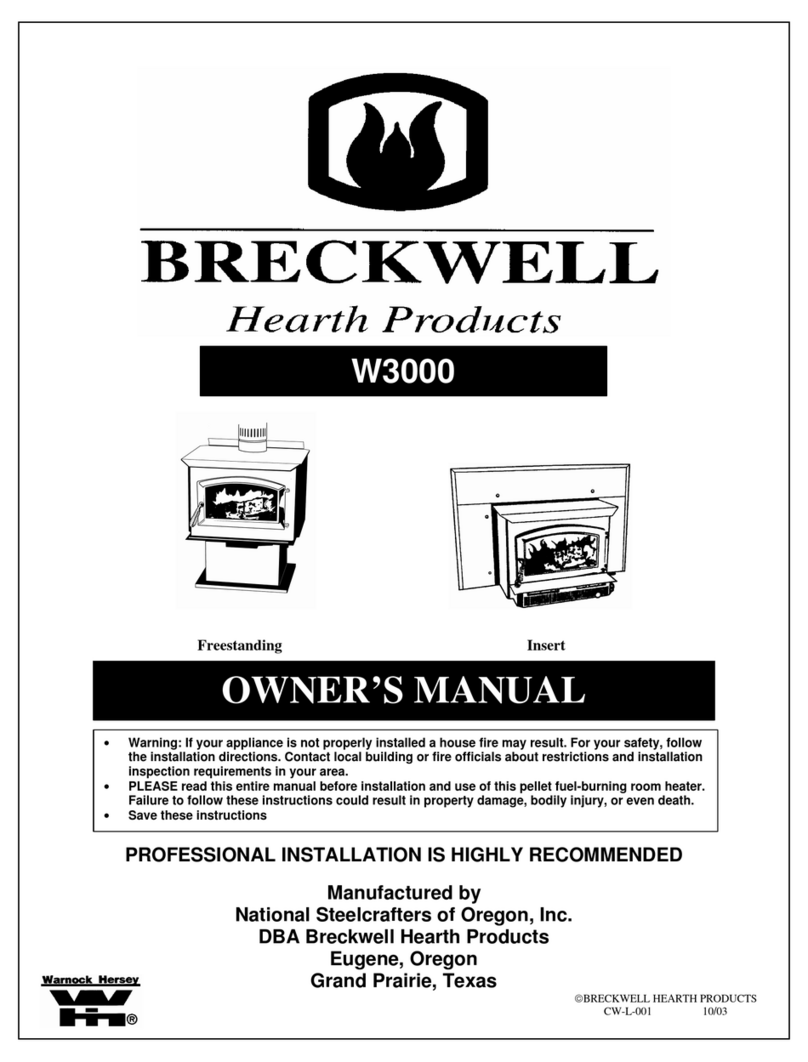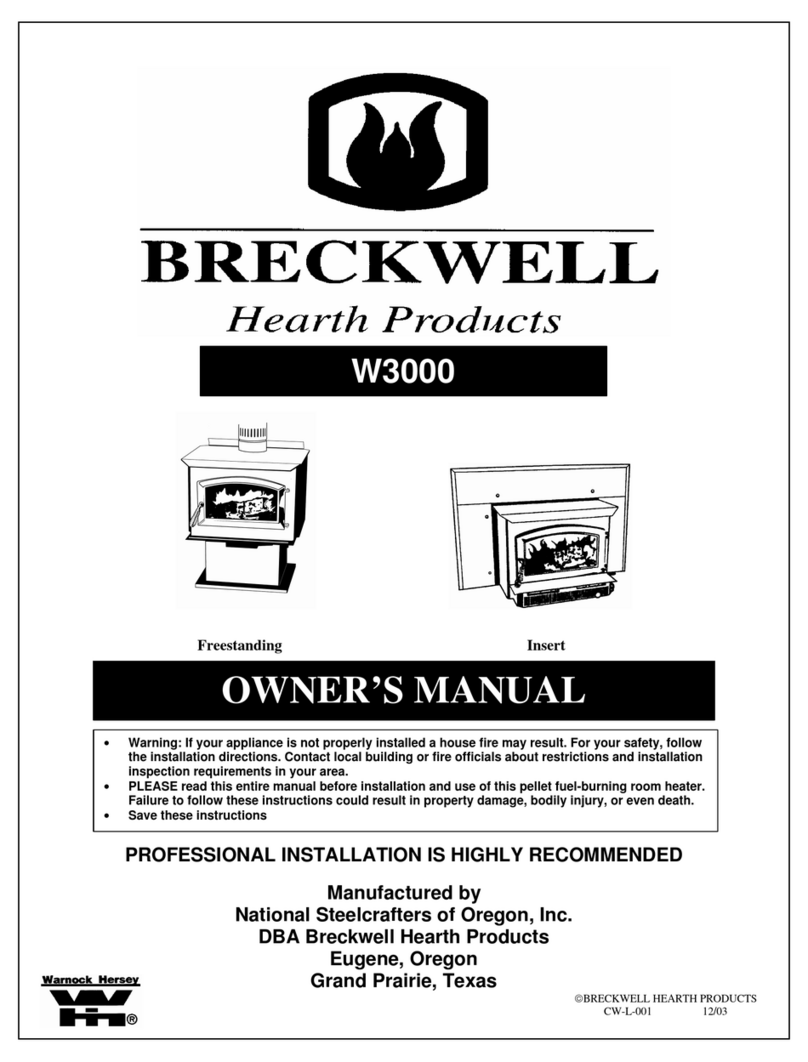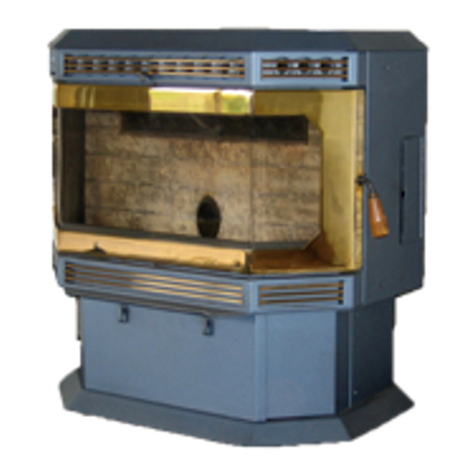
FAILURE TO CLEAN AND MAINTAIN THIS UNIT AS INDICATED
CAN RESULT IN POOR PERFORMANCE AND SAFETY HAZARDS.
NEVER CLEAN WHEN HOT.
NOTE: Inspect burn pot periodically to see that holes have not
become plugged, if so, clean thoroughly.
ASH REMOVAL
Ashes should be placed in a metal container with a tight-fitting lid. The
closed container or ashes should be placed on a noncombustible
surface or on the ground, well away from all combustible materials
pending final disposal. If ashes are disposed of by soil burial or
otherwise locally dispersed, they should be retained in the closed
container until all cinders have thoroughly cooled.
ASH DISPOSAL
Remove ashes periodically as they fill the firebox. To remove ashes:
a. Make sure fire is out and firebox is cool.
b. Clean heat exchanger tubes (see “CLEANING” and Figure 25).
c. Remove the burnpots inner section by grasping it and pulling
straight up (see Figure 26).
d. Empty ashes from the inner section and scrape with cleaning tool;
make sure holes are not plugged.
e. Vacuum to remove ashes from the burn chamber interior and the
burnpot shell.
WARNING: Make sure ashes are cool to the touch
before using a vacuum. See “VACUUM USE”.
f. Dispose of ashes properly. (See “ASH REMOVAL” above)
a. Replace inner section into burnpot; make sure it is level and
pushed all the way back down and that the igniter hole is to the
rear when it is reinstalled (see Figure 26).
b. Make sure the burnpot is level and pushed all the way in, if the
collar on the burnpot attached to the fresh air tube is not pushed
back to meet the firebox wall, the Hot Rod will not work properly.
VACUUM USE
If a vacuum is used to clean your unit, we suggest using a vacuum
designed for ashes. (We recommend LoveLess Ash Vac, 1-800-568-
3949 Ext. #27) Some regular vacuums and shop vacs leak ash into the
room. Your vacuum or shop vac may have a special filter or bag
available to eliminate this leakage.
CLEANING
a. Heat Exchange Tubes – Your Breckwell stove is designed with a
built-in heat exchange tube cleaner. This should be used every
two or three days to remove accumulated ash on the tubes, which
reduces heat transfer on the P22. Insert the handle end (with
hole) of the cleaning tool onto the cleaning rod (refer to figure 25).
The cleaner rod is located in the grill above the stove door. Move
the cleaner rod back and forth several times to clean the heat
exchanger tubes. Be sure to leave tube cleaner at the rear of the
stove.
b. Interior Chambers – Four ash doors and two upper baffles in the
firebox in the P22 can be removed for periodic cleaning (Figure
27). These doors allow access to the chamber surrounding the
firebox.
NOTE: When removing the upper baffles do not remove the
screws; just loosen them enough to allow the baffles to be
removed.
Periodically, you must vacuum ashes from this chamber. In some
cases you will need to remove creosote, which can accumulate
rapidly under certain conditions. A small wire brush can be used.
It is important to remove this creosote because it is highly
combustible. INSPECT BEHIND THESE CLEANING PLATES AT
LEAST ONCE PER TON OF PELLETS BURNED UNTIL YOU
ARE FAMILIAR WITH HOW ASHES AND CREOSOTE
ACCUMULATE WITH YOUR OPERATING PRACTICES. Use the
small wire brush to also clean the inside of the chamber walls,
above the access doors.
FIGURE 25
FIGURE 27
MAINTENAN
E 1
FIGURE 26
Igniter Hole








































